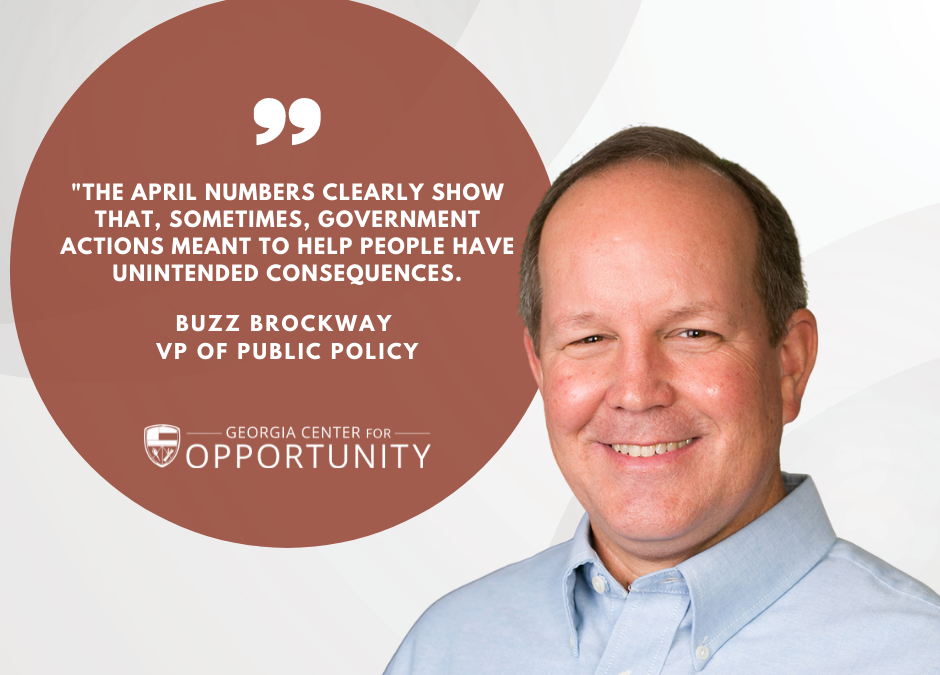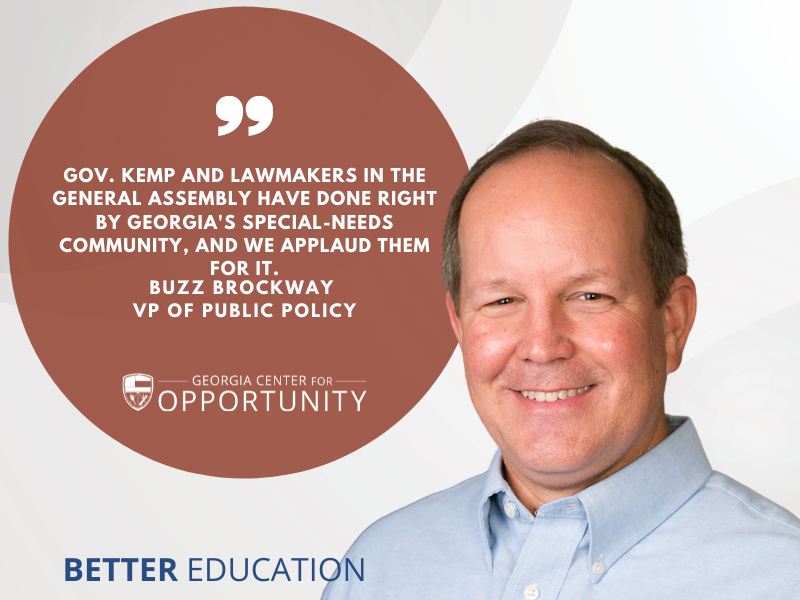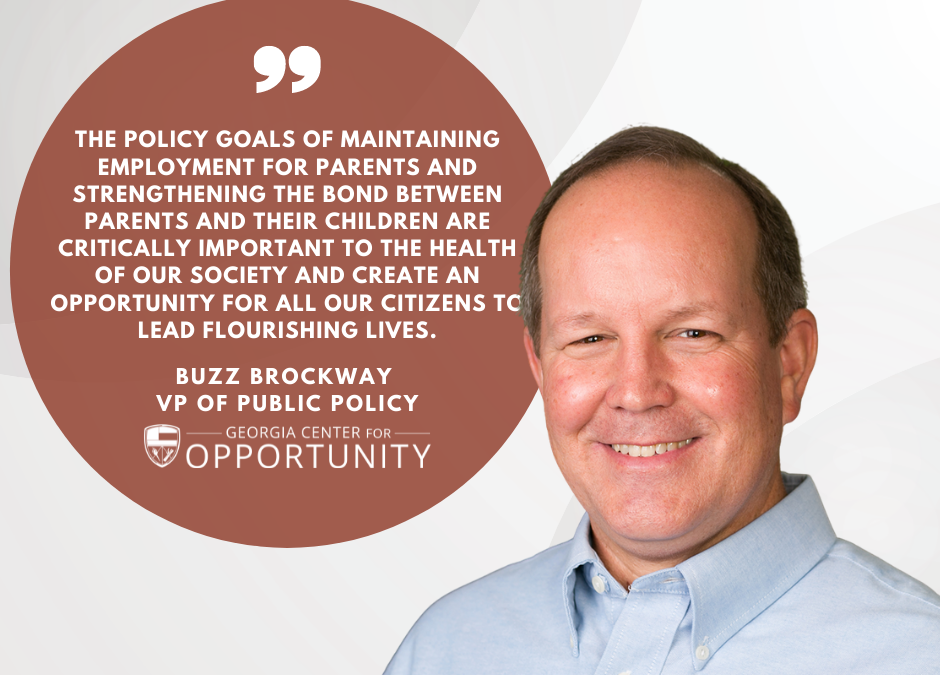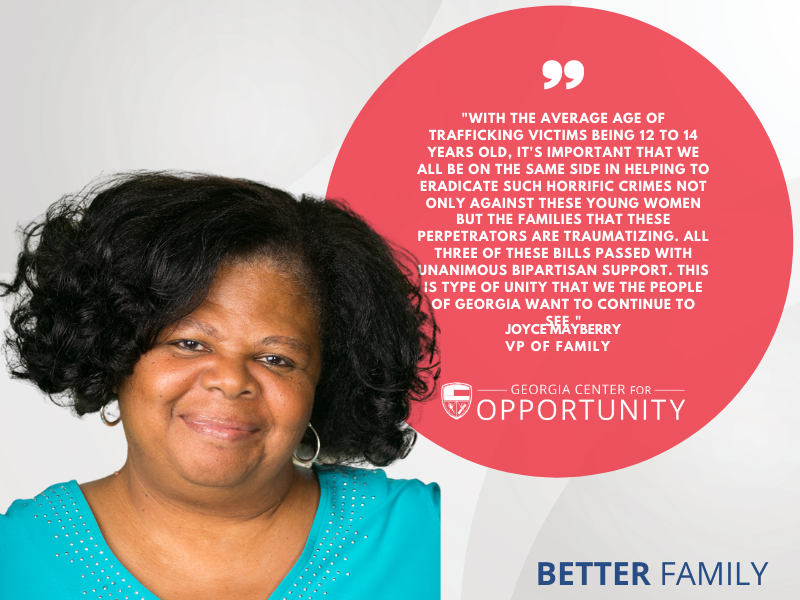
Unemployment Figures for the U.S. Contrary to Analysts’ Expectations
Unemployment Figures for the U.S. Contrary to Analysts’ Expectations







At 3:30pm today, Gov. Brian Kemp is scheduled to sign Senate Bill 47, a measure that makes vital improvements and updates to the Georgia Special Needs Scholarship Program in light of the COVID-19 pandemic. In March, the measure passed the House 91-71 and the Senate 3-23.



Today, Gov. Brian Kemp signed into law House Bill 146, a measure that provides three weeks of paid time off for Georgia statement government employees after the birth, adoption, or foster placement of a child.
The Georgia Center for Opportunity’s (GCO) take: “Policymakers at the federal and state level should continue seeking ways to help employers and parents find paid parental leave solutions. The policy goals of maintaining employment for parents and strengthening the bond between parents and their children are critically important to the health of our society and create an opportunity for all our citizens to lead flourishing lives,” Buzz Brockway, GCO’s vice president of public policy.

“The challenge is how to pay for parental leave for employees at small and mid-sized businesses. Some might argue that the government should simply mandate businesses offer this benefit. But a government mandate or tax-based solution would disproportionately hurt. It’s important to remember that small businesses are particularly vital to low-income communities. Placing a heavy burden on these businesses may end up doing more harm than good to the very people we seek to help.”


President Biden has unrolled a $1.8 trillion spending plan—called the American Families Plan—for the next decade.
The Georgia Center for Opportunity’s (GCO) take: “While we support many of the themes that President Biden has included in his plan, such as supporting families, the plan ultimately falls short because it mistakes lasting change as coming from Washington rather than being homegrown in our local communities,” said Randy Hicks, president and CEO of GCO. “What’s more, our fear is that the president’s plan will worsen ingrained generational poverty by expanding, rather than reforming, safety net programs that — no matter how well-intended — often trap people and limit their ability to achieve a better life.”



Gov. Brian Kemp recently signed three bills into law—Senate Bill 33, Senate Bill 34, and House Bill 287 — aimed at fighting human trafficking in Georgia.The Georgia Center for Opportunity’s (GCO) take: “This is a win not just for those who have experienced the horror of human trafficking, but for all families across Georgia,” said Joyce Mayberry, GCO’s vice president of family. “With the average age of trafficking victims being 12 to 14 years old, it’s important that we all be on the same side in helping to eradicate such horrific crimes not only against these young women but the families that these perpetrators are traumatizing. All three of these bills passed with unanimous bipartisan support. This is type of unity that we the people of Georgia want to continue to see.”



We need to have a frank discussion about how we view our fellow man and what we want for ourselves, our families, and our neighbors.
At the forefront of this discussion are policies that seem to want to help people. Policies that are labeled “anti-poverty” or expand social services indeed have good intent. However, I suggest these policies often are pandering and dismissive of the value of the person we hope to help.
For instance, Los Angeles recently set out to become the largest U.S. city to institute a guaranteed income for the poor. On its face, this sounds like a way to help those in need find help. But as we dive deeper we begin to see that we are subsidizing rather than alleviating poverty. It reeks of the idea that we would simply pay off the poor and want nothing substantive for them.

Understanding how poverty is perceived by those in it, so that we can better understand how to address it.
We must realize that these actions cause us to look at our neighbor as a purely numerical transaction— a phrase often used to push against the ideas of capitalism, but one resoundingly relevant when we discuss these guaranteed incomes. The idea is that a person who is homeless or without work deserves to only be given a small living wage to simply survive.
And survive on what? The quality of housing affordable on such services is usually in dangerous areas or ill-suited for long-term living. The quality of food affordable often leads to obesity or unhealthy lifestyles. Yes, they survive but we have afforded them no dignity or purpose in life.
The bottom line is the utter lack of compassion or humanity in this response. The idea that we view fellow humans as so incomplete that we ask nothing of them. This mentality simply says, “You can give us nothing so we will expect nothing of you.”
As a society, we have sold this idea as moral or righteous, but we sell short the potential of the people we hope to serve. We have robbed them of being fulfilled and feeling successful.
I am in no way saying that people hold no value unless they have a job. But what I am saying is that everyone has something to contribute and a way to bring value to those around them. More importantly, we desire to contribute and find self-worth in doing so.
We at the Georgia Center for Opportunity refer to this as “human flourishing.” We seek to help ensure that everyone has access to it, no matter the circumstances of their birth. In doing so, we understand that flourishing will look different for each person. That is a beautiful thing.
Recently a famous YouTuber, Mark Rober, shared the story of his autistic son. Mark’s son will likely never hold a job or be able to do the same things 99% of people will but he still desires to contribute and bring value to those around him. So yes we will need to adapt our understanding of success and human flourishing, but I would challenge us to consider that merely existing is not flourishing. And expecting that you will not flourish shows a severe lack of compassion and empathy.
Compassion requires that we would want more for people. Not merely enough material possession to be appeased but to truly desire for human flourishing.
On the opposite end of flourishing is merely surviving with no hope or want for more. Hopelessness occurs when we expect nothing from someone.
This is why we must look at policies that do more than simply address a felt need. We must build systems that restore and promote dignity and purpose. They must not trivialize human value to a monetary transaction. Instead, they must instill hope, purpose, and an expectation of human flourishing.

Each dollar you give is doubled and goes to support efforts to expand opportunities throughout Georgia.